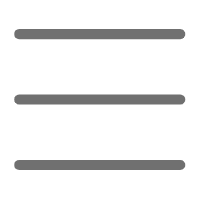Introduction
Hello, today I want to discuss a particularly annoying problem in deep learning projects - class imbalance. This issue has been giving many colleagues headaches. Have you encountered situations where the model's overall accuracy looks good, but upon closer inspection, you find that the model performs poorly on certain classes? This situation is very common in real projects.
Current Situation
Let's first look at why class imbalance is so important. In my teaching and practical experience, I've found that many students encounter this problem when working with real datasets. For example, in medical image classification, there might be 10,000 normal samples but only 100 disease samples. Without special handling, the model is likely to be biased towards predicting the majority class, resulting in poor recognition of minority classes.
I remember once when guiding students on a project, they were developing an industrial defect detection system. The dataset had 5,000 images of normal products, but only about 300 images of various defect types combined. After training, the model achieved 99% accuracy for normal products, but the detection rate for defects was shockingly low at around 30%. This was clearly unacceptable.
Approach
So, how do we solve this problem? Through years of practice and research, I've developed a relatively complete solution. We can approach this from both data and algorithmic perspectives.
First, let's look at the data aspect. I remember solving the class imbalance problem through data augmentation when working on a traffic sign recognition project. For traffic sign categories with fewer samples, we can increase the sample size through rotation, translation, scaling, and other operations. Here's a code snippet I'd like to share:
import tensorflow as tf
from tensorflow.keras.preprocessing.image import ImageDataGenerator
datagen = ImageDataGenerator(
rotation_range=20, # Random rotation range
width_shift_range=0.2, # Horizontal shift range
height_shift_range=0.2, # Vertical shift range
zoom_range=0.2, # Random zoom range
horizontal_flip=True, # Random horizontal flip
fill_mode='nearest' # Fill mode
)
def augment_minority_class(x_minority, y_minority, num_to_generate):
x_augmented = []
y_augmented = []
for x, y in zip(x_minority, y_minority):
x = x.reshape((1,) + x.shape) # Adjust dimensions for data augmenter
i = 0
for batch in datagen.flow(x, batch_size=1):
x_augmented.append(batch[0])
y_augmented.append(y)
i += 1
if i >= num_to_generate:
break
return np.array(x_augmented), np.array(y_augmented)
Would you like to know how to use this code? Let me give you an example. If we have a class with only 100 images and want to increase it to 500, we can use it like this:
x_augmented, y_augmented = augment_minority_class(x_minority, y_minority, 4) # Generate 4 new samples for each image
But data augmentation isn't a silver bullet. Sometimes we need to solve the problem at the algorithm level. This brings me to my favorite technique - Focal Loss. This loss function is particularly suitable for handling class imbalance. I remember the first time I used Focal Loss, the model's recognition accuracy for minority classes improved by nearly 20 percentage points!
Let's look at the implementation of Focal Loss:
import tensorflow as tf
from tensorflow.keras import backend as K
def focal_loss(gamma=2., alpha=.25):
def focal_loss_fixed(y_true, y_pred):
pt_1 = tf.where(tf.equal(y_true, 1), y_pred, tf.ones_like(y_pred))
pt_0 = tf.where(tf.equal(y_true, 0), y_pred, tf.zeros_like(y_pred))
epsilon = K.epsilon()
pt_1 = K.clip(pt_1, epsilon, 1. - epsilon)
pt_0 = K.clip(pt_0, epsilon, 1. - epsilon)
return -K.sum(alpha * K.pow(1. - pt_1, gamma) * K.log(pt_1)) \
-K.sum((1 - alpha) * K.pow(pt_0, gamma) * K.log(1. - pt_0))
return focal_loss_fixed
model.compile(optimizer='adam',
loss=focal_loss(),
metrics=['accuracy'])
Practice
After discussing the theory, let's look at a complete practical case. This is the code framework I used in an actual project:
import tensorflow as tf
import numpy as np
from sklearn.utils import class_weight
def prepare_data():
# Code for data loading and preprocessing
pass
def build_model(input_shape, num_classes):
base_model = tf.keras.applications.ResNet50(
weights='imagenet',
include_top=False,
input_shape=input_shape
)
# Freeze pretrained layers
base_model.trainable = False
model = tf.keras.Sequential([
base_model,
tf.keras.layers.GlobalAveragePooling2D(),
tf.keras.layers.Dense(512, activation='relu'),
tf.keras.layers.Dropout(0.3),
tf.keras.layers.Dense(num_classes, activation='softmax')
])
return model
class BalancedDataGenerator(tf.keras.utils.Sequence):
def __init__(self, x, y, batch_size=32, augment=True):
self.x = x
self.y = y
self.batch_size = batch_size
self.augment = augment
self.datagen = ImageDataGenerator(
rotation_range=20,
width_shift_range=0.2,
height_shift_range=0.2,
horizontal_flip=True
) if augment else None
def __len__(self):
return int(np.ceil(len(self.x) / self.batch_size))
def __getitem__(self, idx):
batch_x = self.x[idx * self.batch_size:(idx + 1) * self.batch_size]
batch_y = self.y[idx * self.batch_size:(idx + 1) * self.batch_size]
if self.augment:
batch_x = next(self.datagen.flow(batch_x, batch_size=len(batch_x)))
return batch_x, batch_y
def train_model(model, x_train, y_train, x_val, y_val):
# Calculate class weights
class_weights = class_weight.compute_class_weight(
'balanced',
classes=np.unique(y_train),
y=y_train
)
class_weight_dict = dict(enumerate(class_weights))
# Create data generator
train_generator = BalancedDataGenerator(x_train, y_train)
# Compile model
model.compile(
optimizer=tf.keras.optimizers.Adam(learning_rate=1e-4),
loss=focal_loss(),
metrics=['accuracy']
)
# Train model
history = model.fit(
train_generator,
validation_data=(x_val, y_val),
epochs=50,
class_weight=class_weight_dict,
callbacks=[
tf.keras.callbacks.EarlyStopping(patience=5),
tf.keras.callbacks.ReduceLROnPlateau(factor=0.2, patience=3)
]
)
return history
Experience
In practice, I've found that solving class imbalance isn't simply about applying one technique, but rather combining multiple methods. For example, we can use data augmentation, class weights, and Focal Loss simultaneously. Such combinations often yield the best results.
One particularly important point is parameter tuning when using these techniques. For example, the gamma parameter in Focal Loss affects how much the model focuses on hard samples, while the alpha parameter affects the weights of different classes. The selection of these parameters needs to be determined based on the specific problem.
I suggest starting with smaller parameter values, such as gamma=2.0 and alpha=0.25, then adjusting based on validation set performance. If you find the model's recognition rate for minority classes is still not good enough, you can gradually increase these parameter values.
Summary
Through this article, we've discussed in detail how to solve class imbalance problems in deep learning. From data augmentation to algorithm optimization, from simple class weights to complex Focal Loss, these techniques are all very practical tools.
Which of these methods do you think is most suitable for your current project? Or have you encountered other effective methods for handling class imbalance? Feel free to share your experience and thoughts in the comments.
In practical applications, these methods need to be selected and adjusted according to specific situations. Remember, there's no one-size-fits-all solution. The key is to understand the principles and applicable scenarios of each method, then apply them flexibly according to your needs.
Have you encountered class imbalance problems in your projects? What methods did you use to solve them? Feel free to discuss and exchange ideas with me.







